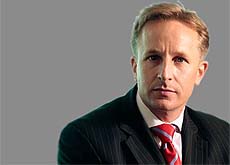Peter Matza explains how treasurers contribute toward the successful health and growth of their organisations.

Treasurers have led the drive for finance professionalism in the Middle East and many of their organisations are now seeing the benefits of centralised treasury functions.
The Middle East remains a region of opportunity but presents numerous challenges for professional treasurers.
Many entities have exceptionally well-run and well-resourced treasuries, although some companies and government-owned or government-related entities can be bureaucratic, slow moving and weighed down by cumbersome organisational structures.
Treasury is both an operational and strategic discipline that needs managing in an integrated fashion. At a strategic level, treasury is about offering options for executive decision taking.
With a broad perspective of the organisation and the environment in which it operates, the treasurer is ideally positioned to facilitate the integrated thinking that will help an organisation achieve sustainable value creation.
Leading the drive
The questions that treasurers should be addressing are relatively simple: what do we invest in, how do we raise funding for that investment and how do we control the risks associated with funding and investing cycles? Treasurers need to be clear and concise when discussing appropriate choices, execution practicalities and likely outcomes.
Treasurers have led the drive for finance professionalism in the Middle East and many of their organisations are seeing the benefits of centralised treasury functions with state-of-the-art systems, in-house banks, payment factories and greater appreciation of risk management – both financial and in a wider strategic business context. This benefits not just their organisations but also the younger treasury professionals coming through the ACT’s examinations process.
Over the past couple of years there have been several instances of treasurers undertaking far-reaching treasury transformation programmes, overhauling processes and integrating new treasury management systems with other IT infrastructure within their organisations. What lessons can we learn?
Transformation programmes
Throughout 2011 and into 2012, the treasury team at international marine terminal operator DP World delivered four large and complex financing deals over a 12-month period from June 2011, raising in excess of $3 billion and achieving competitive pricing with innovative structures when markets were at their most resistant.
According to the senior vice president, treasury at the time, Stephen Bishop, “We’re always exchanging ideas and thoughts, and we talk as often as we can with the CFO contributing to his thought processes. We have good working relationships with all the other departments that use our services at corporate level, for example, the business development team and we work on most of the decisions that need to be made regarding corporate finance and funding in the group.”
Over 2012 and into 2013, Dubai Aluminium (DUBAL)’s treasury team has worked through as wide a range of business-as-usual activities as any for the company’s global operations. These included financing; cash and liquidity risk management; FX, interest rate, commodity and credit risk management; and bank relationship management. So, a heavy workload for a world-class treasury function!
Apart from strategic direction, crucially DUBAL invests in its people and in addition to ACT qualifications, DUBAL has trained its treasury staff in areas such as financial markets and commodity hedging.
Flexibility is important
The theme of professional growth development is core to good practice treasury management. The treasury of Kuwait-based Alghanim Industries has been through a similar if less expansive period of change over recent years.
As Group Treasurer Rob Farrow says; “When people get ingrained in the job, they don’t get the knowledge of different roles,” he explains.
“Flexibility is important so people can cover for each other and carry out different roles. Each member of the team can now comfortably handle all our core operational activities.”
He believes that supporting individuals’ career development is key to building a successful team.
“Some leaders want to keep people and hold on to them and don’t let them develop,” he says.
“We encourage good people to join the team and let them go and move up in other areas of the organisation.”
Farrow is adamant that work needs to be satisfying.
“The way to get the best out of people is to give them work they enjoy, variety and opportunity. If people are given those things, they perform for you.”
Role of technology
Invariably technology plays a crucial role when companies are re-engineering their treasury operations.
The Al Fahim group in Abu Dhabi, with a presence in the automotive, oil and gas services, hospitality and property industries spent a large part of 2010 being proactive in finding a cash management solution to streamline their large payments flow to suppliers, and securing resources and cost savings.
Group Treasurer Ahmad Nassar says; “We were able to focus on how to achieve our short-term and long-term objectives, which are all about implementing the best treasury professional practices. One of the key achievements was the implementation of a state-of-the-art treasury management system which will further contribute towards our strategy and professional development.”
One obvious measure of the development of the treasurer’s role is his or her relationship with the board. Treasury plays a key role in determining an organisation’s financial strategy, working out how to finance business policy and how to manage the ensuing risks. Boards are interested in key financial metrics: will the proposal contribute to shareholder value? How is it being measured? Will the projected return exceed the cost of capital? They are also concerned with risk (what are the risks? What is the evidence?) and with corporate governance, legal and compliance issues.
Corporate governance

Matthew Hurn, ACT Middle East Chair: “Treasury should be embedded in the business decision-making process to help the company meet its strategic objectives.”
In strategic terms, the fundamental role of the treasurer with regard to corporate governance is to reduce risk. Risk is not only protecting against bad events that might happen but also protecting against the chance that positive events, such as winning a tender for a contract, do not happen.
Risk may arise from factors such as rapidly rising or falling commodity prices including oil, gold, iron and copper and basic food stuffs or deteriorating economic conditions in the aftermath of the credit crisis and recession. Treasurers need to use all the information available to understand the impact and likelihood for future business prospects.
Operationally, treasurers need to manage daily flows of information and ensure that there is clear communication within treasury, and between treasury and other parts of the business.
The right balance
ACT Middle East Chair, Matthew Hurn, executive director, treasury, Mubadala Development Company, says; “When building teams it is important to get the right balance between development and delivery. I would recommend investing a lot of time and effort into your business units to ensure treasury is embedded in the business decision-making process to help the business meet its strategic objectives.”
Corporate governance frameworks require a system of internal control to be established that is operational and effective. The precise nature of what is required differs from nation to nation.
Generally, however, the internal control system can be characterised as a process that includes:
i) Policies, such as the remit of the audit committee or the fixed/floating interest rate profile of the debt structure;
ii) IT systems, such as treasury management systems;
iii) Tasks, such as cash management; and
iv) Culture, which should facilitate communication and transparency.
The internal control system includes the whole system of controls, financial and otherwise, to ensure adherence to management policies, safeguard assets and secure the completeness and accuracy of corporate records. The systems of control must be embedded in the operations of the company and form part of its culture.
Corporate treasury is a profession built on the foundation of a number of financial disciplines, all of which are not only vital in their own right but also support and complement each other.
Hopefully the examples talked about in this article have added some depth to the understanding of how treasurers contribute successfully to the health and growth of their organisations.
* Peter Matza is the Engagement Director for the ACT












